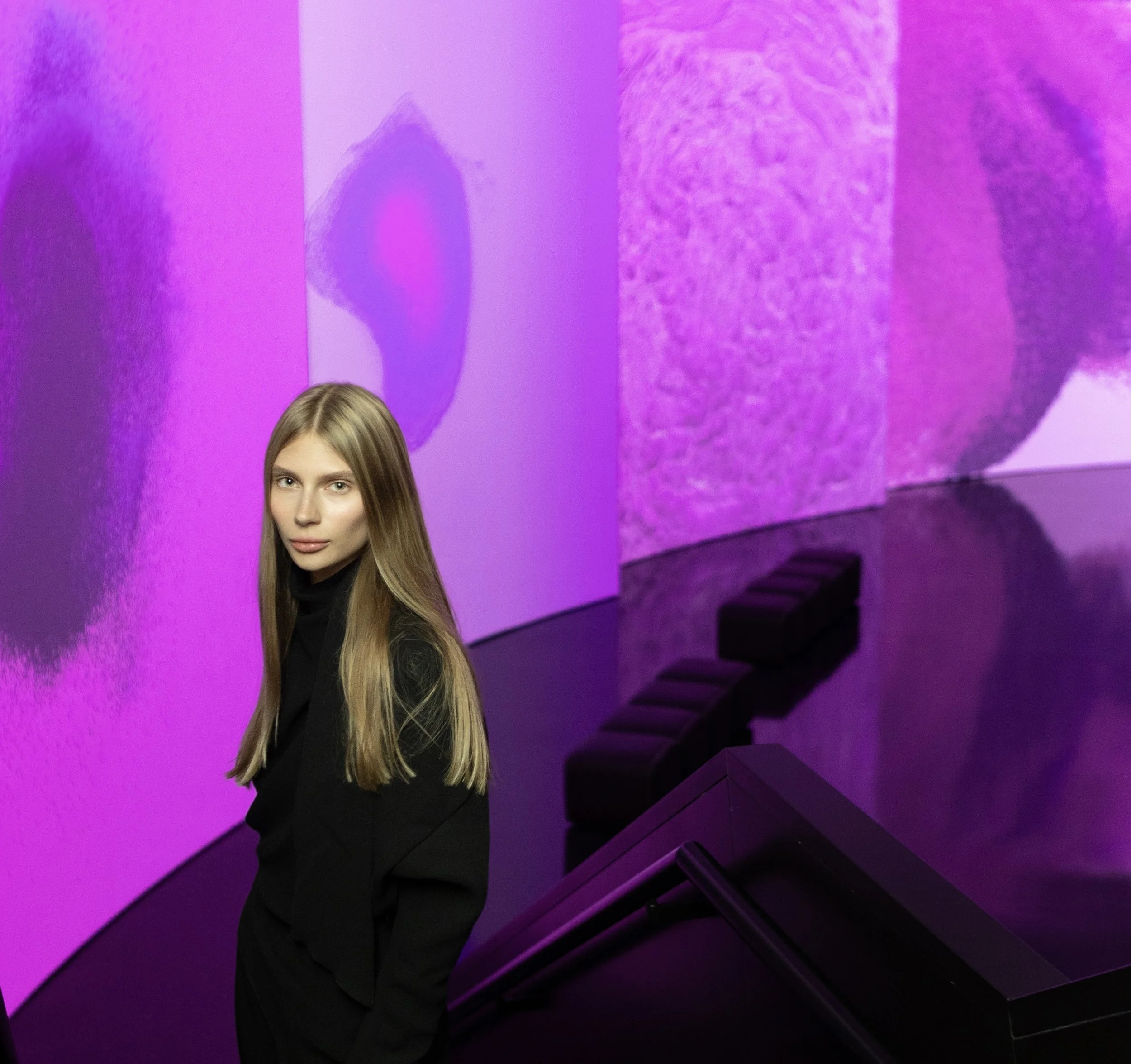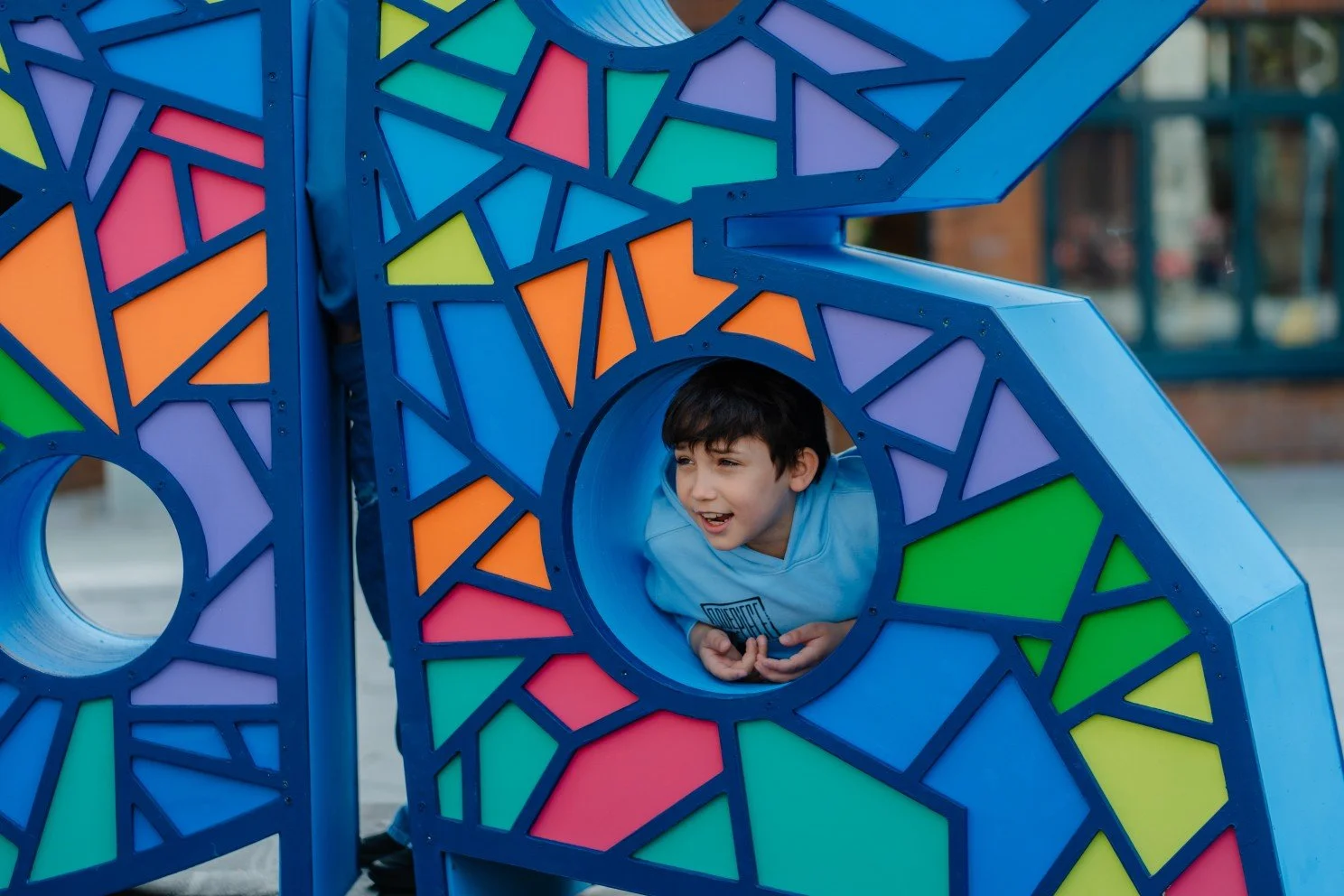INTERVIEW | Qian Chen
10 Questions with Qian Chen
Qian Chen is a visual artist based in London and Xi'an, who has enjoyed drawing since her childhood. With the support of her parents, she is eager to turn this hobby into a long-term career, thus working hard to achieve it. She finished her BA at London College of Communication majoring in Illustration, MA at Royal College of Art majoring in Animation.
Qian Chen - Portrait
Dreamania | Project Description
Dreamania explores new dimensions of childhood memories, nostalgic culture, fancy dreams of irrationality. By observing and recording life trajectories, and reprocessing frozen memories, Qian create a tangible concept of spatial iteration, presenting the product of the interaction between daily life and dreams.
Inspired by Utopia and Generation Z’s advocating for quantum products, Qian enjoys the different impacts of order and chaos. These structures encourage her to narrate, combining stop motion images with nihilistic blur to create a Dreamcore space where dreams overflow into real life. .
Practice is an important step that cannot be obtained. In Qian collection of nostalgia and producting, filling, recreatin, and beautify to connect and establish new memory pairs to form a re-establishment of imaginary space.
Dreamania © Qian Chen
INTERVIEW
Can you share more about your early years and how your childhood passion for drawing evolved into a career as a visual artist?
I like to draw on books in school, especially during classes. Then, I found that my doodles could not be limited to books, so I began to look for a larger canvas. In my continuous exploration, this canvas not only grew in size but also in dimension.
How did your experiences studying Illustration at the London College of Communication and Animation at the Royal College of Art shape your artistic style and approach?
I liked to create zines during my undergraduate studies. Every illustration was an enjoyable process. In the third year of my graduation project to establish a graphic narrative, I suddenly wondered why I couldn't make my illustrations move. This should be a very interesting attempt, and then I started my animation journey.
Dreamania © Qian Chen
Your work integrates stop-motion images with a dream-like aesthetic, as you mention in your statement. Can you describe your creative process from the initial concept to the finished piece?
'Dreamania' inspired by Utopia and Generation Z's advocating for quantum products, I enjoy the different impacts of order and chaos. These structures encourage me to narrate, combining stop motion images with nihilistic blur to create a Dreamcore space were dreams overflow into real life.
Practice is a crucial part of your work. How do you approach and incorporate practice into your daily routine as an artist?
Seize every inspiration and then magnify it into pictures, sculptures, and photography. This allows my thoughts to be expressed and conveyed in the form of art. And in this process, I can more intuitively see whether my ideas are consistent with my works.
"Dreamania" delves into childhood memories and nostalgic culture. What inspired you to explore these themes, and how do you translate them into your visual art?
I want to try cross-border cooperation and create artistic innovation with technologies related to quantum mechanics. It is not limited to media but breaks through the artistic sense to a new context and breaks the barriers of the physical world.
Dreamania © Qian Chen
Dreamania © Qian Chen
Your art juxtaposes order and chaos to create Dreamcore spaces. Can you explain how you balance these contrasting elements in your work?
This balance point is established in the process of production and adjustment. I can't imagine the final form of this project, but the "absurd fantasy" throughout is what I want to express, so I keep asking myself whether this communication is heard by the audience.
As mentioned in your statement, you aim to connect and establish new memory pairs to form imaginary spaces. What is the ultimate message you want to convey with your art?
Dreamania" is to create a new imaginative space by filling, recreating, and beautifying connected memories in different media, prompting the audience to blur the boundaries between the past and the future, creating an absurd and distorted recreation paradise and using distorted and beautified retro equipment. It produces complex resonances, confusion about time and memory deviations, and dialectical thinking about nihilism.
Your work is highly rooted in your personal experiences. How do you ensure that your message is universally understood? Do you consider the viewer's point of view when creating a new piece?
The audience is the starting point of my creation. Adult audiences may feel that the boundaries between the past and the future are blurred, and complex childhood resonances are produced in the absurd and distorted recreation paradise and the distorted and beautified retro equipment, which produces confusion about time and memory deviations, and dialectical thinking about nihilism. For children, it is a fun game zone.
Dreamania © Qian Chen
Speaking of new pieces, what upcoming projects or exhibitions are you currently working on, and how do you envision your practice evolving in the future?
I am currently working on healing painting, which is a series of relaxed and comfortable states of interacting with pigments. I have been trying new art forms and exploring my own inner artistic expression and will focus more on creating works combining soft pigments and delicate emotions.
And lastly, where do you see yourself and your work five years from now?
These five years have been a transition for me from leaving school to entering the art market, from creating anxiety to returning to my original intention and focusing on healing myself through creation. My relationship with art is constantly evolving. There are many contradictions in the process of communication, and more of them are my own obstacles. These are both motivation and obstacles. I am trying to explore harmonious and comfortable communication.
Critique of the Qian Chen's artistic vision
Qian Chen's work is defined by a constant drive for innovation and exploration, moving beyond the conventional boundaries of visual art. Her journey from early doodles in schoolbooks to complex, multidimensional creations demonstrates a fearless approach to artistic expression. Her fascination with breaking through the limitations of physical media and dimensions reflects a unique vision that integrates fine art with moving images, particularly through stop-motion animation. By combining order and chaos, she creates an intriguing tension that invites the audience into a dreamlike space where reality and imagination overlap.
Her academic training in illustration at the London College of Communication and animation at the Royal College of Art has clearly shaped her technical skillset. Still, she uses this foundation to explore far more experimental concepts. The transition from static illustration to animation marks a critical turning point in her career, revealing her desire to make art that is not only visually engaging but also alive and fluid. Her work, mainly through the lens of "Dreamania," taps into a nostalgia for childhood while exploring complex themes like memory, time, and the surreal.
One of the most compelling aspects of Qian Chen's work is her ability to blend improvisation with structured practice. She embraces spontaneous inspiration, translating fleeting ideas into diverse forms such as sculpture, photography, and painting. This approach allows her to express nuanced emotions and concepts that are both deeply personal and widely relatable. The balance between order and chaos is central to her process, with the resulting works offering a playful yet philosophical space where viewers can reflect on the nature of reality.
Qian Chen focuses on creating dreamcore spaces where dreams and actual life merge, which speaks to a broader ambition of expanding the boundaries of artistic media. By incorporating modern technologies like quantum mechanics into her creative practice, she brings a fresh perspective to the contemporary art scene that challenges traditional forms and invites innovation. Despite the experimental nature of her work, she remains grounded in the importance of audience engagement, aiming to create experiences that are accessible yet intellectually stimulating.
In summary, the artist's commitment to pushing artistic limits while maintaining a deep connection with her audience sets her apart as a bold and forward-thinking figure in the art world. Her evolving practice promises continued innovation, making her a dynamic presence in contemporary visual art.
Artist’s Talk
Al-Tiba9 Interviews is a promotional platform for artists to articulate their vision and engage them with our diverse readership through a published art dialogue. The artists are interviewed by Mohamed Benhadj, the founder & curator of Al-Tiba9, to highlight their artistic careers and introduce them to the international contemporary art scene across our vast network of museums, galleries, art professionals, art dealers, collectors, and art lovers across the globe.




















